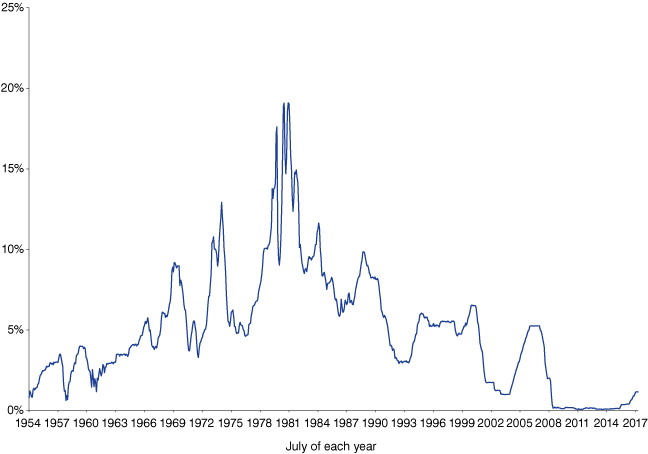Don't forget to watch interest rates in 2018

Indiana’s economy is highly reliant on durable goods and agriculture production, two sectors that are especially sensitive to interest rate movements.
Since the Great Recession, the U.S. economy has lingered in an environment of low interest rates in part to stimulate the economy. While there have been periods of slight oscillation, interest rates have remained historically low (see Figure 1). In recent years, the Federal Reserve has made rumblings of decreasing the size of its balance sheet, but those warnings have largely not been acted on. However, more Fed action on interest rates remains a possibility in 2018.
Figure 1: Federal funds rate over time, July 1954 to October 2017

Source: https://fred.stlouisfed.org
Indiana’s economy is highly reliant on durable goods and agriculture production. These markets are especially sensitive to interest rate movements. Adding to the uncertainty in 2018 will be the change of leadership at the Federal Reserve, expected in February 2018. While most Fed watchers anticipate a smooth transition and the likely continuation of existing policy, it adds an additional layer of ambiguity on how aggressive the Federal Reserve will be when approaching interest rates.
The potential impacts on the Indiana economy if the Federal Reserve decides to raise interest rates? These are numerous, but overall we are concerned about:
- The general pressure it will put on economic activity statewide, and that will depend on how aggressively this policy is pursued.
- The durable goods sector: While Indiana’s economy overall is benefitted by manufacturing earnings and gross state product, this sector is especially vital to wages in rural Indiana.
Indiana has a regional wage disparity based on population density. Wages have grown in Indiana, but this wage growth has been disproportionately weighted toward urban rather than rural Indiana. The disparity has the potential to grow if interest rates adversely affect manufacturing production.
So, let’s all be Fed watchers in 2018.
Editor's Note: One way to do this is to monitor FRED (and no, that’s not my uncle). The Federal Reserve Bank of St. Louis has long made a vast array of economic indicators available through its increasingly high-tech web tools. Immerse yourself here: fred.stlouisfed.org.
